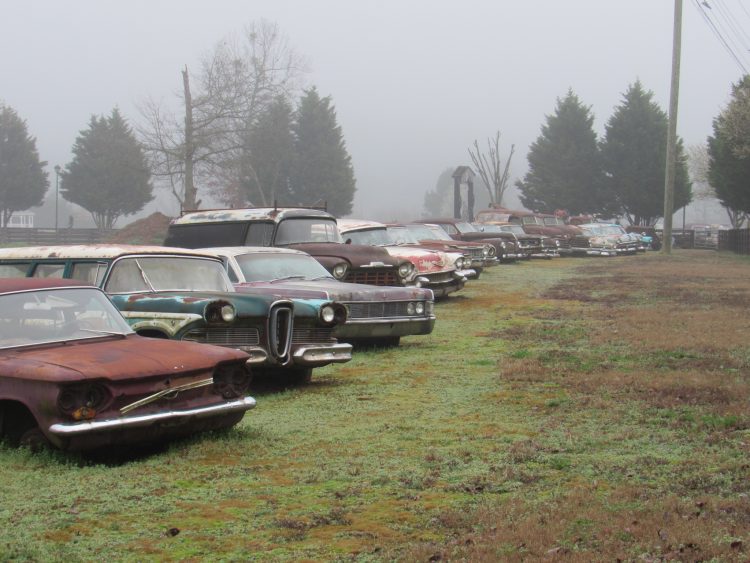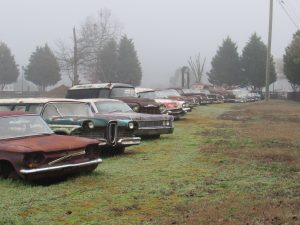I like to take pictures of old, decaying stuff. I’m a partisan of patina, if you will. So when I found this strange cache of old cars and farm equipment on a property around Talmo, GA; and discovered that the property owner was cool with people wandering about and taking pictures, you can imagine I was pretty stoked.
As I was wandering around the property, I noticed a couple things. There were occasional recurring themes. There was a bunch of fire trucks spanning several decades. There was a scattering of tow trucks. There was a crowd of ’59 Cadillacs, a faction of ’51 Fords, a jumble of Jeeps. Overall, however, it was just a hodgepodge of old cars and trucks of different types and decades.
The truly random nature of the collection started me wondering – how does something like this come to be? How does one end up with a couple hundred old cars and trucks in various states of decay arranged in what was at one time a farm field? (We found the remnants of kale and soy growing in a few places.) I began to question the psychology of all of it. What possesses a person to acquire a collection like this?
How does one end up with a couple hundred old cars and trucks in various states of decay arranged in what was at one time a farm field? Share on XAs I was pondering this, Suzanne brought up another point – that psychology may not really be the issue. In a rural area like this, if one is into cars, people might bring cars to that person, and ask them if they want them. After a while, the answer may become, “Sure, just drop it at the end of the row over there.” So there’s a potential sociological (being known in a community as a car collector) and demographic (rural) answer to the question as well.
I tagged this post as “marketing.” Why?
As a marketer, I’m always trying to figure out behaviors. I create personas to figure out where my buyers might hang out on social media, what they do for fun, what they read on- and offline. Creating a persona is really trying to get into a person’s head. Personas usually start with demographic data, and then try to extrapolate behavioral variables from that demography, frequently buttressed with statistics about generational and related behaviors.
Sociological factors, such as community membership, however, are less commonly considered, but may sometimes offer the best answer about a behavior, particularly one that isn’t easily explained – like collecting a whole bunch of seemingly unrelated old cars.

